Barbara Chandler Allen
Founder/President, Fresh Artists, Philadelphia
“Barbara had the vision to see enormous possibilities of harnessing this new technology [large-format printing] to help re-imagine the way we engage, inspire, and educate disadvantaged children, and the tenacity and strategic thinking to seek the best advice and alliances as a way to develop this vision into an innovative, entrepreneurial, financially stable, and successful social business.” — Tim Markley, president, Markley Enterprise
YOU WERE HIRED by the Philadelphia Superintendent of Schools to decorate the 850,000 square-foot Education Center with 350 pieces of artwork created by K-12 students. Can you share why and how you designed and implemented a new use for large-format digital print technology and how this project impacted your career?
In 2006, the new Superintendent of the School District of Philadelphia stood next to me in the huge, empty, unfinished atrium of the new 850,000 square-foot Education Center and told me he “wanted to see children’s art everywhere he looked!” I asked what his budget was and he told me, “Zero, but tell me what you need and I’ll find the money.” Daunted, I asked my son, an industrial and environmental graphic designer, to meet me there the next day, and I repeated the challenge to him. Without looking at me, he scanned the atrium and said one word – like in the movie, “The Graduate” – digital. He explained digital sign-printing machines could blow up children’s art on a large scale, we could mount them on lightweight rigid foamboard, and float them off the wall with simple standoffs, without glazing or heavy frames. He and I had worked together on a project filling the hallway of a design-themed charter school with huge photos of high-design products, and he knew this was the way to tackle this vast building quickly and make a real statement showing off the kids’ spectacular artwork.
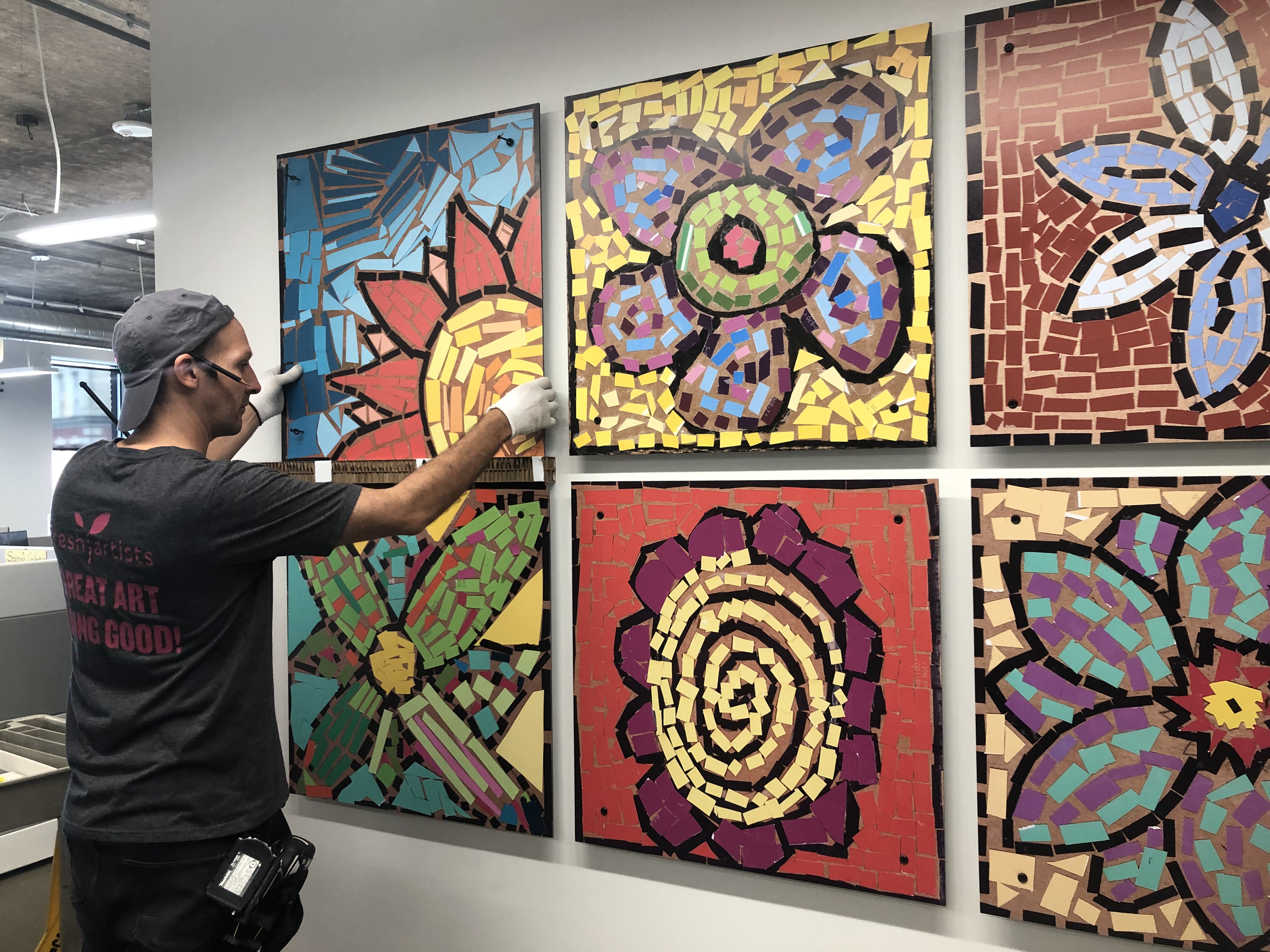
We approached a local printer whose six kids had gone through Philly public schools, and he offered to do the printing pro bono, “in between his retail work,” as a gift to pay back the school district that enabled all his kids to have successful careers. We scanned K-12 children’s art at a high resolution and they started printing it in three different sizes, which we quickly nicknamed, Mini Bear, Baby Bear, and Mama Bear! It took us almost 18 months to survey, plan, and slowly install the hundreds of amplified reproductions of kinetic kindergarten tempera abstracts, brilliant middle school watercolor landscapes, and exceptional high school acrylic portraits of Philadelphia’s iconic architectural landmarks. As the artwork went up, section by section throughout the building, over and over visitors and employees would stop us to say, “This is extraordinary! I want to buy a copy of this!” Our answer was always, “Sorry, no. They’re not for sale!”
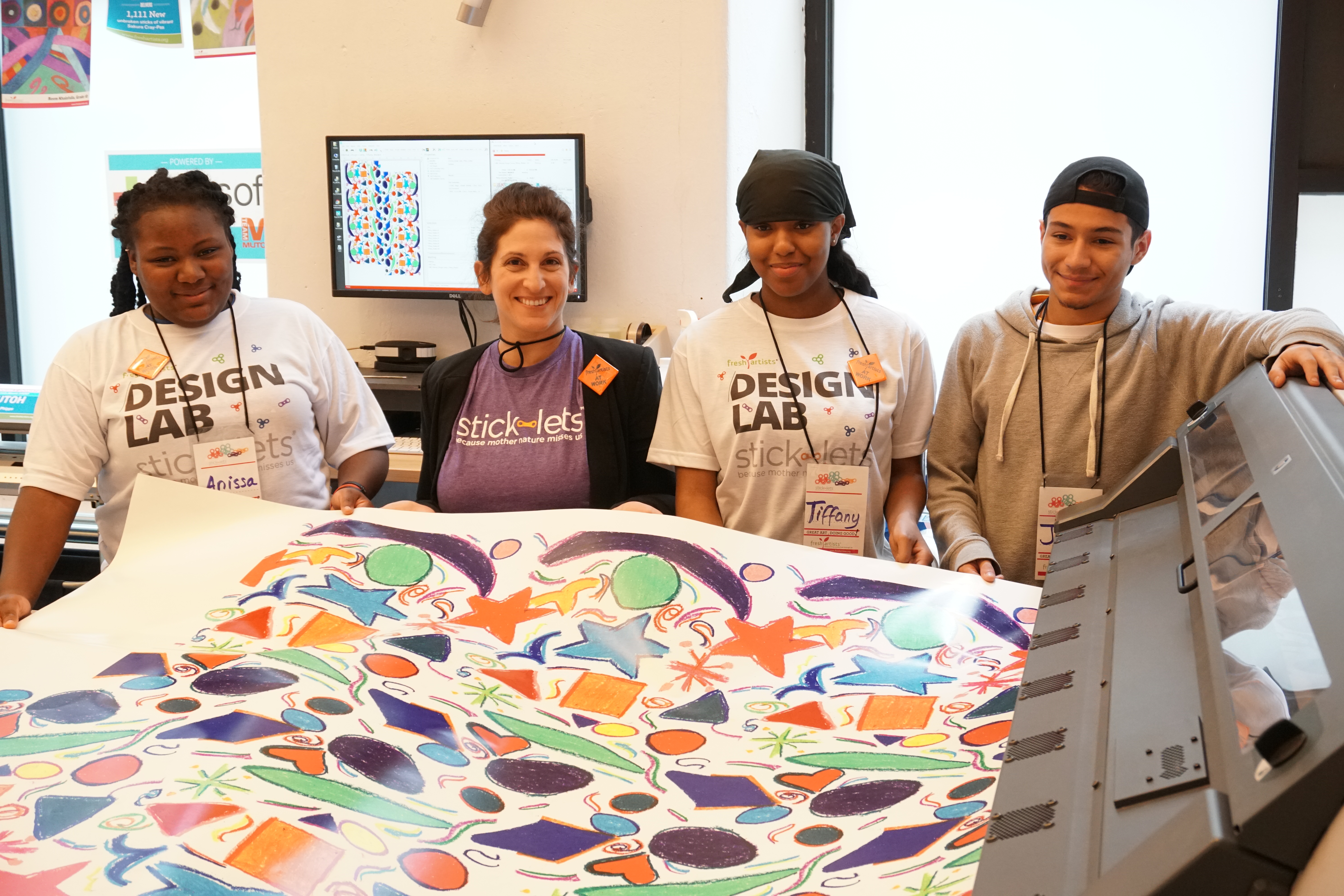
Then the district’s funding began to disappear. Their 256 art teachers were given only a small stipend of 83 cents per child to buy a year’s worth of art supplies for their classrooms. Then that budget disappeared. We were sitting on a big idea: start a nonprofit called Fresh Artists where children would donate the use of their art to help other kids. Corporations donated money to Fresh Artists to deliver art supplies to schools in need and received a tax deduction. Fresh Artists installed inexpensive, large-format digital reproductions in corporate donor’s offices as thank you gifts from the kids. It was a win, win, win, win – everybody won!
When the nonprofit was founded, we started paying our printer-friend to print our panels, but his international parent corporation went out of business. By that time, SGIA [now Printing United Alliance] had adopted Fresh Artists as a nonprofit educational partner, and several pieces of printing, laminating, and finishing equipment were donated to be a demonstration printing workshop for teens. We realized we could print our own panels, and the rest is history! Roger fell in love with all aspects of printing and took SGIA classes in Fairfax, Virginia. We were in the printing business! The more we learned, the more we wanted to learn more! We loved every aspect of printing, and sharing it with youngsters was just plain joyful!
Advertisement
The work you do with Fresh Artists for the younger generation is outstanding. Can you explain the importance of education in arts and printing at a young age and your involvement in this?
Both Roger and I were deeply influenced by art teachers throughout our education. They were like gods to us. Art was it for us from the moment we could hold a crayon. A million years later, when we realized we were sitting on an answer to what was broken in public art education and that helping art teachers was the key, we put the pedal to the metal and went full-tilt to start Fresh Artists. Roger was still in college, so I started the organization and ran it out of three spare bedrooms for two years. When he finished school, our board of trustees suggested we hire him because he was already doing all the graphic design, installations, and IT work pro bono. No one was more surprised than I was when he jumped at the opportunity. Can’t say I would have taken a job working for my mom at 23! But it has worked out beautifully.
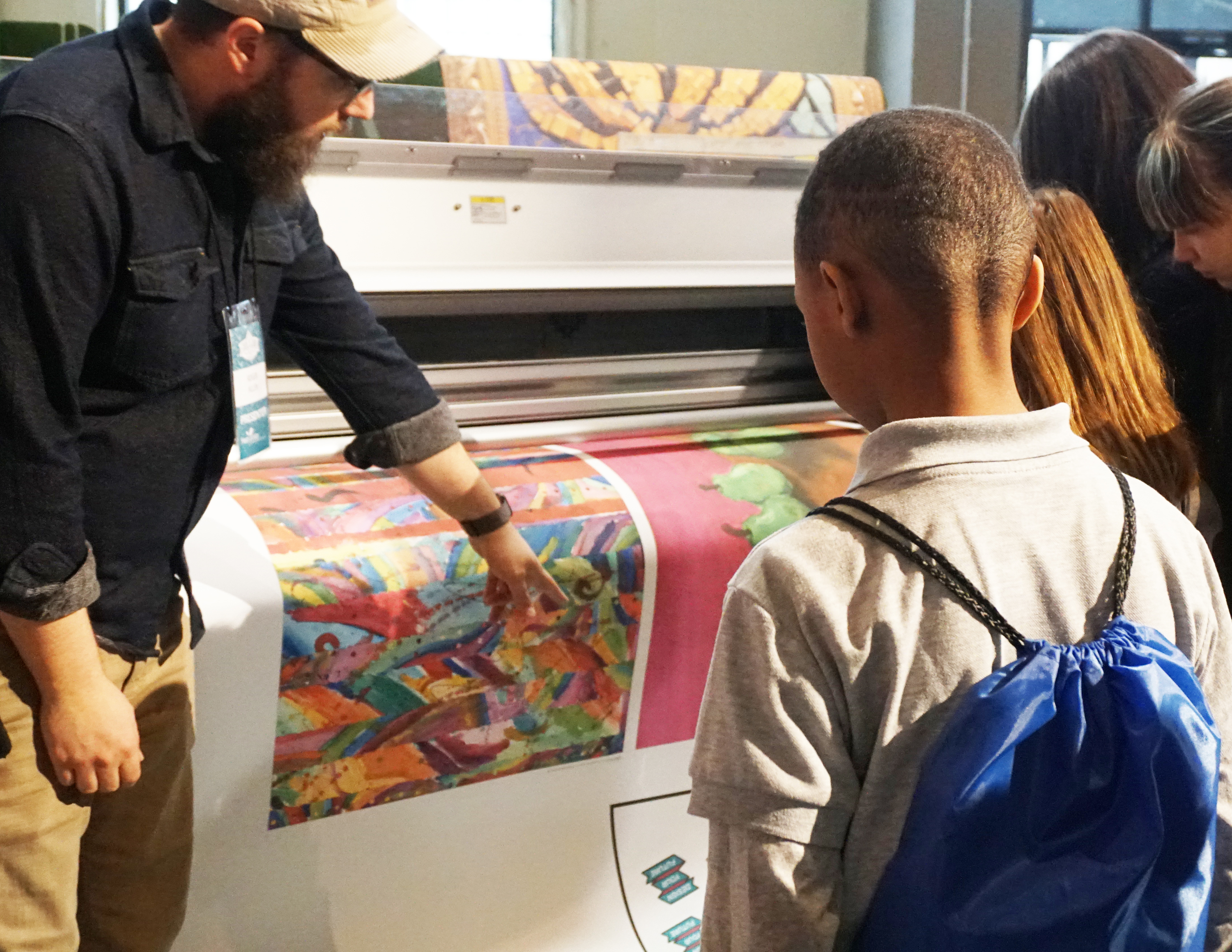
We believe that art education is a lifeline for many, many kids – especially for those who learn differently. According to the US Department of Labor, 65 percent of America’s school children will eventually be employed in jobs that have yet to be created. Many studies can prove that an arts education teaches 21st century skills for the new, entrepreneurial economy: critical thinking, creative problem solving, risk-taking, collaboration, and innovating. In addition, art making teaches kids to think and act like entrepreneurs, through initiative and self-expression, grit, opportunity recognition, flexibility, and adaptability. Any of you who went to art school will remember the 3 a.m. panic when your whole 10-foot papier-mâché sculpture collapses under its own weight five hours before final Crits! You didn’t quit!
Supporting robust art and creative career education in highly-stressed, severely underfunded public schools is a calling.
We started a program called Cool Jobs Expo in 2016 when we realized kids were dropping out of school before high school. We introduce them to highly successful people with jobs in the creative economy, and every year the favorite presenters are our friends at Axis Graphic Installation (axisinstalls.com) who wrap an actual Smart Car with gorgeous children’s art, right in front of them. Printing in any form is the best of all possible worlds. Every day is different. Tons of color, beautiful artwork, ideas, graphics, and designs come in the door every day. People need us to solve interesting and challenging problems and snags – and we sometimes come out looking like heroes! The technology is exciting, fascinating, complicated, and always changing. It’s hard work, but it’s fun work. There’s an exhilaration almost every time the huge splash of color and form comes out of the printer. Watching youngsters experience this is delightful and meaningful to us. Kids love printing. This part is pure pleasure.
In your interview during the second round of judging you mention how you use the wide-format industry to put in place what Fresh Artists is all about: “Great art, doing good.” Can you expand on this, specifically your philanthropic work with schools?
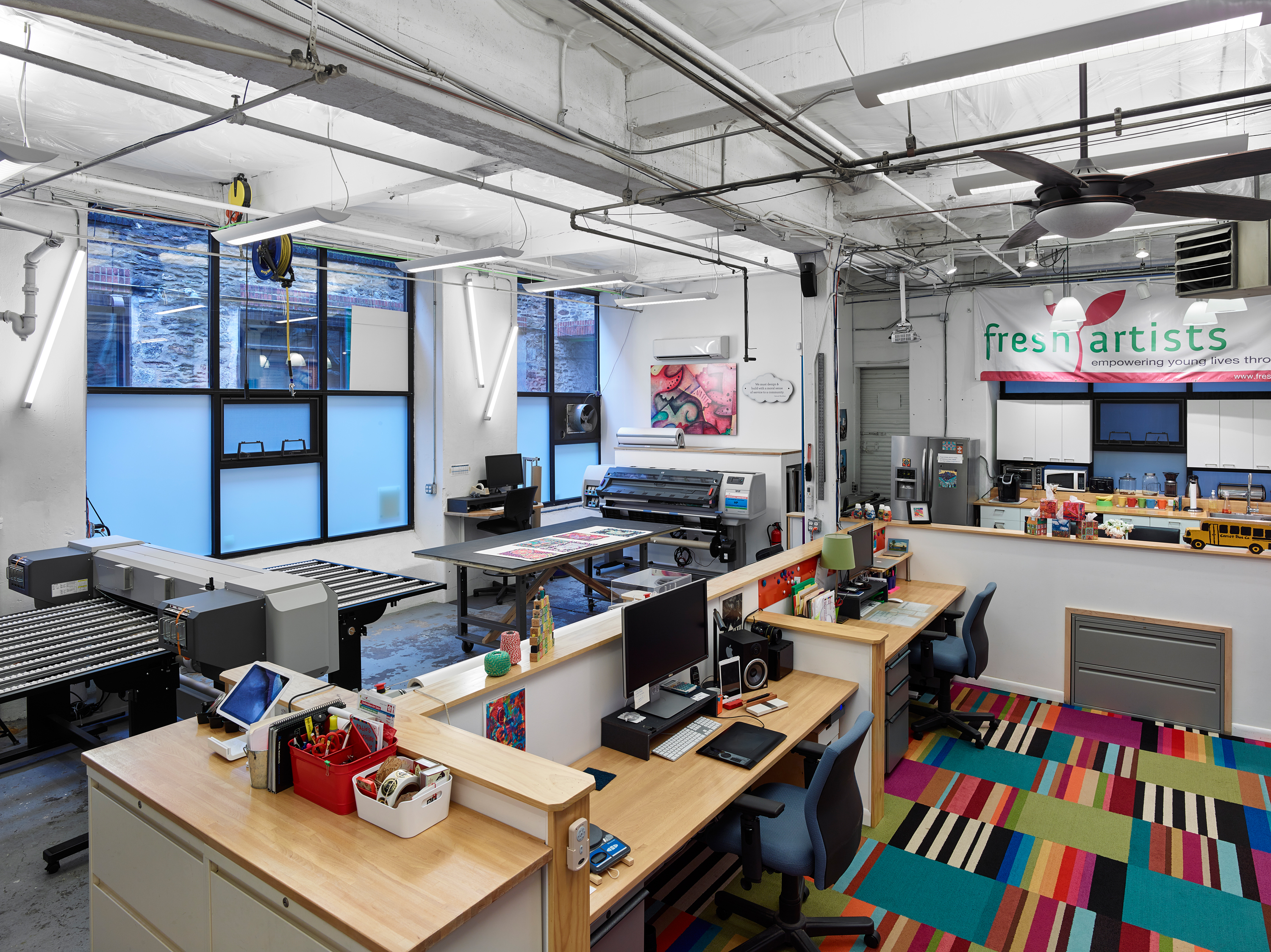
The model of placing scaled-up kids art in Fortune 100 corporations demands connoisseurship, curation, and confidence. Strong children’s art is lovely in its original, tiny form. But to blow it up to 10 x 14-feet, it must be more than pretty, it must be great! Some days it seems the bigger we make it, the greater it is and the more good comes from it. We actually are a virtual museum of American children’s art with a purpose: to do good. We tell the kids their art can come off the fridge and go to work to change the world.
We track where each piece of art has been used; our bespoke FileMaker database records every single time each of the 2300 pieces of art in our collection has been reproduced, and what size. We can extrapolate that use into the number of children that, theoretically, could be impacted. The clever metric was reached in consultation with a well-known manufacturer of quality art supplies, by helping us determine the useful life of a specific consumable, an eight-color box of watercolors. We can tell each child how many one-hour watercolor lessons the gift of their artwork could deliver. The number of kids that their gift could have helped is a sobering and elevating announcement to both child and parent. We call our child art donors “Artist/philanthropists.” Some of our young philanthropists’ artwork has raised many thousands of dollars. And that child donates 100 percent of those funds to help other children.
In order to demystify the concept of “philanthropy” for little kiddos, we wrote two illustrated children’s story books describing how Fresh Artists works through the eyes of an almost-9-year-old boy, Pablo. Pablo donates his art to Fresh Artists and the story chronicles his path as well as that of his art. At the end, Pablo is empowered as he sees what his art can do to deliver much-needed materials to fill empty shelves in the art room. And he sees himself in a quite different light. Several art teachers tell how their shy, self-conscious young student was transformed when becoming part of Fresh Artists, saying “He literally walks taller now” or “She’s opened up and smiles easily after being recognized as not only talented but also generous.” Our mission is three-fold: to empower young lives through art, to advocate for a quality public education for all children through the installation of K-12 children’s art in highly visible and unexpected places, and to deliver art supplies and innovative art programs to schools in need.
The fact that we get to help low-income kids learn, create, grow up healthy, altruistic, curious, full of purpose, and print beautiful, big stuff is a job to love for life! Being part of the wide-format, digital print industry is a delight and an honor. Fresh Artists is grateful to everyone at SGIA, Printing United, and all the generous manufacturers who have empowered us to introduce thousands of American kids to the world of wide-format digital printing. This honor means the world to Roger and to me, and everyone at Fresh Artists.
[Photo Credit: Jason Varney]
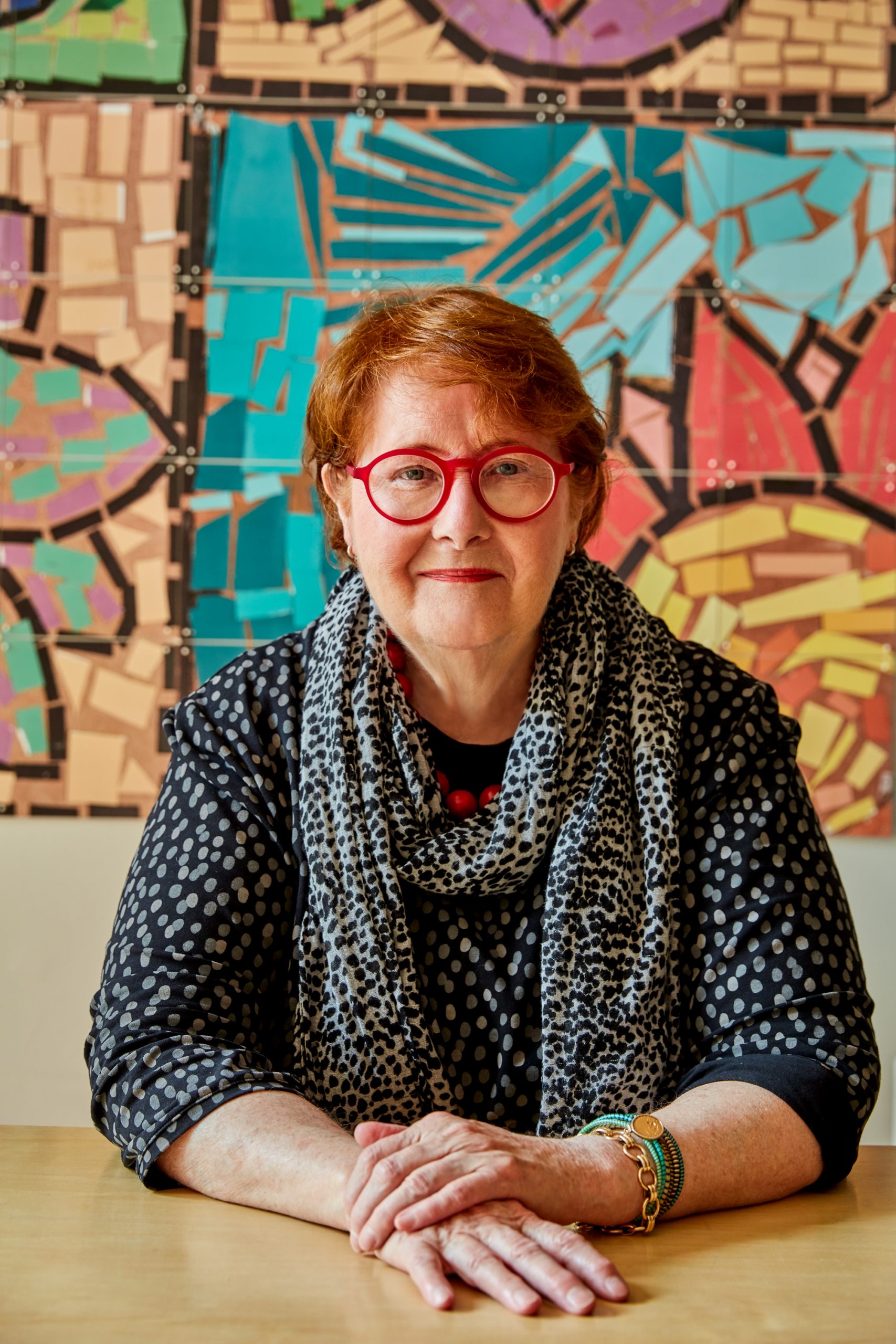

 VEHICLE WRAPS + GRAPHICS3 weeks ago
VEHICLE WRAPS + GRAPHICS3 weeks ago
 Press Releases3 weeks ago
Press Releases3 weeks ago
 Case Studies3 weeks ago
Case Studies3 weeks ago
 Case Studies1 week ago
Case Studies1 week ago
 Benchmarks3 weeks ago
Benchmarks3 weeks ago
 Press Releases2 months ago
Press Releases2 months ago
 Press Releases3 weeks ago
Press Releases3 weeks ago
 Press Releases2 months ago
Press Releases2 months ago





















